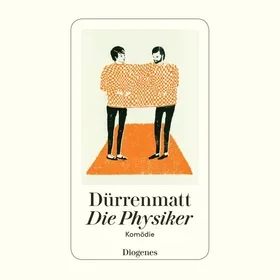When Dr. Barry Bergdoll, Meyer Schapiro Professor of Art History and Archaeology and Director of Undergraduate Studies in the Department of Art History and Archaeology, decided to teach “Architecture, 1750 - 1890” during Summer Session this year, he had the feeling he wouldn’t be relying solely on the textbook to drive concepts home.
“I wrote one of the textbooks for this class, but I don’t think I’ll be reading this textbook to the students over Zoom this year,” Bergdoll said. “It has occurred to me that this period, 1750 to 1890, is incredibly relevant to today. Without making the mistake of always reading the past as the preparation for the present, there are many reasons why understanding the dynamic of that period is very pertinent.”
During the course, students will learn about the major theorists and designs of architecture, primarily European, from the Age of Enlightenment to the dawn of the art nouveau critique of historicism.
We caught up with Bergdoll, who previously served as the Philip Johnson Chief Curator of Architecture and Design at New York's Museum of Modern Art (MoMA), to learn how architecture of the 19th century provides a lens through which to interpret the ways we’re seeing public spaces change in response to the issues of today.
What is the particular relevance of studying the late 18th and 19th century right now?
This is the period, in Europe and North America, of intense industrialization. This is when the current economic system is put in place with its inequalities and injustices that we are in a moment of crisis related to. We’re in a moment of questioning that order of things and it came into maturity during 1750 to 1890.
This period is also one of intense urbanization. Industrialization and mass migration are the historical forces that shape the buildings we look at this course.
[The course covers] the period when space in relation to disease and contagion came to the forefront. This is the time period of the first modern hospital, the birth of the modern clinic and also the birth of the modern prison system. All sorts of things that we are questioning and that are the sources of troubles as a species and as a country.
— Barry Bergdoll, Meyer Schapiro Professor of Art History and Archaeology, Department of Art History and Archaeology
It is also the time period when space in relation to disease and contagion came to the forefront. This is the time period of the first modern hospital, the birth of the modern clinic and also the birth of the modern prison system. All sorts of things that we are questioning and that are the sources of troubles as a species and as a country.
We’ve had a bit more time recently to think about space and design and our relationship to it. Is there any way you suggest students use their curatorial eye to explore architecture and design during the pandemic?
I always try to get students to use space around them to explore design. Many people in this slow down have been rediscovering that walking is the best exercise. There’s no need to use electricity to walk in place on a rubber belt. You can walk outside and look at things. When you do the same walk every day, you start to notice different things. That’s what we try to do in Art History: We try to get people to slow down and look at things, to cultivate the art of slow looking.
Considering your experience at MOMA: We’re in an uncharted time for museums right now, as people are not able to visit in person. How has that changed how you view museums, particularly for architecture?
It is a moment of crisis for museums and almost everything in society - the economy, politics. This pandemic situation and police brutality have led to a reflection of larger structural problems in society, beginning with systemic racism. Museums, the practice of architecture, everything is being rethought.
I don’t think everything will fly out the window. There are certain things we’ve been deprived of that I think people are really hungry for. One of the reasons architecture is so exciting is that older architecture puts us in touch with what we admire in all works of art, which is the handwork and the minds of those that are not present. It is a conversation with makers across time and across space.
People are missing a few things, such as tactility and unscripted, spontaneous conversation.People are eager not just for contemplation but also the social aspect of the museum.
It is a moment of crisis for museums and almost everything in society - the economy, politics. This pandemic situation and police brutality have led to a reflection of larger structural problems in society, beginning with systemic racism. Museums, the practice of architecture, everything is being rethought.
— Barry Bergdoll, Meyer Schapiro Professor of Art History and Archaeology, Department of Art History and Archaeology
How long does it take for a fundamental shaking in society to reflect in the architecture that we see in a time period?
Historically, it is said that architecture is the slowest art form to change. It is expensive. But architecture is not limited to what is built. This course in particular will start in a period of an enormous amount of unbuilt architecture that imagines a different future. That gives a visual image of change to people. On the one hand, architecture is about permanent, slow change. We still go see the Pyramids. It transcends time. But, it is also something that can project in the most compelling ways, visions of a different future. The concept of the architecture of utopia, of alternative living patterns, which was a very common theme in the period I’ll be teaching, what is the architecture of ideas versus the architecture of the economy built? What is the relationship between them?
It will be fascinating when we get to the moment in the course when we discuss a very famous project by a late 1700s architect by the name of Claude-Nicolas Ledoux, who projected an ideal future city. There are many things fascinating about the city he designed, Chaux. One of those things: Because he thought this society would work so perfectly, he designed no prison for it. He believes if a city functioned properly, there would be no need for a prison.
Learn more about Bergdoll’s class, “Architecture, 1750-1890” here and learn more about all of our Summer Session offerings. Registration is open until July 6.


